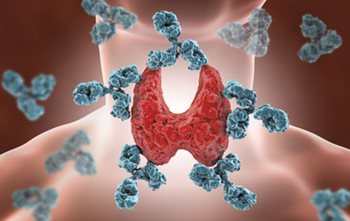-(1).jpg.aspx?width=350&height=250&resizemode=force)
Hashimoto's Thyroiditis From a Western Medicine and Holistic Perspective
An online continuing education course for nurses, medical health professionals and others interested in understanding Hashimoto's Thyroiditis disease, causes, symptoms, lab tests and treatment options from both a holistic and Western medicine approach.
The goal of this continuing education program is to educate all levels of providers and those interested on the autoimmune disease known as Hashimotos thyroiditis. This course will discuss how Hashimoto's is diagnosed. An overview of lab tests and how they are used to diagnose and treat Hashimoto's will be covered. A comprehensive holistic approach to diagnosis, treatment, and natural modalities will be covered, including nutrition, exercise and stress reduction in the treatment of this disease. Pharmacological interventions will also be discussed.
Note: The student should have a thorough understanding of thyroid anatomy and physiology before taking this course. The course Thyroid Gland Overview covers the necessary anatomy and physiology needed and is highly recommended before taking this course.
Questions? Check out our FAQs page and How Online IV Certification Works!
Objectives
Upon completion of this course, the participant will be able to:
- Differentiate between autoimmune hypothyroidism and other non-immune hypothyroid diseases.
- Verbalize the current understanding of the pathogenesis of Hashimoto's thyroiditis.
- Identify Hashimoto's symptoms.
- Identify the population segment most likely to develop Hashimoto's thyroiditis.
- Discuss importance of ruling out other conditions that may be mimicking or contributing to Hashimoto's thyroiditis.
- List and interpret lab tests used in initial diagnosis of Hashimoto's and why these test are done.
- List environmental and internal factors contributing to Hashimoto's and why these are triggers.
- List additional lab tests after Hashimoto's diagnosis.
- Explain salivary cortisol levels and why this test is important in management of Hashimoto's thyroiditis.
- Explain why these tests are performed and how they are used to provide a comprehensive, holistic approach to disease management.
- Identify lifestyle and risk factors that contribute to the development of Hashimoto's thyroiditis.
- Explain how a holistic approach to Hashimoto's thyroiditis results in the increased quality of life versus a pharmacological only approach.
- List the pharmacological medications and supplements used in Hashimoto's thyroiditis.
- Identify medications and supplements used according to lab results and why they are used.
- Explain the elimination diet and how this diet calms the immune response.
- Explain leaky gut and how this contributes to the immune response.
Curriculum
Chapter 1: Hashimoto’s Thyroiditis
- What is Hashimoto’s Thyroiditis
- How is Hashimoto’s diagnosed- symptoms, lab tests
- Lab Tests used to diagnose Hashimoto’s
- How is Hashimoto’s thyroiditis different from other hypothyroid diagnosis
- What population group is most likely to develop Hashimoto’s
- How to interpret test results: TSH, TPO antibodies, thyroglobulin antibodies, free T4, freeT3, Reverse T3
- Additional functional medicine criteria for diagnosis
- Rule out other diseases or conditions mimicking Hashimoto
- How exposure to antigens and intestinal permeability trigger Hashimoto’s
- Additional testing after diagnosis
- External triggers – halogens-fluorine, iodine, bromine and how they influence the thyroid gland
- Chemical triggers – pesticides, estrogen disruptors , heavy metal exposure
- Antinutrients
- Adrenal/thyroid connection
- Stress response and how stress changes the physiology of the body
- Pharmacological interventions
- Supplements to enhance thyroid function
- Elimination diet- what it is and why
- Stress reduction techniques and how they work
- Exercise- types
- Hashimoto’s requires long term therapy and effort to attain and maintain maximum health
- Expected outcome of holistic and/or pharmacologic only interventions
- California Bill 241
- Implicit Bias in Healthcare
- What is Implicit Bias?
- Implications of Implicit Bias in Healthcare
- How to Reduce Implicit Bias
Price: $30.00
Contact Hours: 2.5
-(1).jpg.aspx?width=350&height=250&resizemode=force)
Course Author

Brooke Lounsbury
Brooke Lounsbury, RN, has over 26 years of experience as a nurse. Her primary field was in Home Health and Hospice until leaving mainstream nursing in 2008 to teach holistic health classes devoted to helping people empower themselves through education, public speaking engagements, classes, and coaching -online and in person. Topics include digestive health, fermentation, sleep hygiene, and the effects of our technology (computers, wifi, cellphones, etc) on our health and traveled to Austria to receive further training and is an EMF consultant and home assessment mitigation expert.
Her latest project is her "Intro to Writing CE", a course to empower nurses on how to write a continuing education course!
She is available for writing course consultations, and can be reached at basicsrn@gmail.com.
Course Accreditation
See our Accreditation Statements page to view our accreditation information.